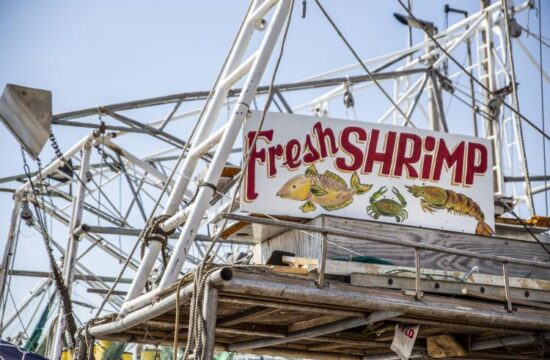Then Davis showed up, distraught and unable to listen to his wife’s warnings that his presence was putting others in danger. Federal troops captured them all two days later. The Davis family’s biggest loss was not their president and his wife, but the young, mixed-race child they called Jimmy Limber. Varina had taken Jimmy into her home during the Confederacy’s early days and raised him alongside her children. After Joe Davis, the middle child of the Davis family, died, their bond grew stronger. Varina, who was dark-skinned and traveling with her child, realized the dangers of traveling with him in turbulent times after his capture. She begged a Northern general to allow Jimmy in. He never came back to her. Varina is Charles Frazier’s novel. Varina depicts a world where Varina and Jimmy Limber (later known as James Blake) reunite 40-years later in Saratoga Springs. Varina is a widow seeking relief from her 60-year-old morphine addiction. He is a handsome Albany teacher with connections to a prominent Harlem clan. He recently came across “First Days Among the Contrabands,” a real book that dedicates a chapter to “Jimmy Limber.” However, he can’t remember any details and all he comes up with are brief flashes. Varina attempts to fill in for Blake’s missing details over six Sundays. He tries to challenge her view of the past, but he does not always succeed. The fall of the Confederacy has been portrayed as a tragedy in stories about it, regardless of whether they are the late 19th Century literature on the “Lost Cause” or the more recent tales that focus on hubris, cruelty, and retribution. Frazier has, to his credit, let go of any desire romanticize this period in American History. Varina sees Richmond as a dark and lonely place. Their home is called “The Gray House” by Varina, a play on The White House. She calls parts of Richmond “dim even in daylight.” However, Frazier doesn’t seem to be able to let go of these tropes. Racist slave masters who are devoted to their cause can cost them everything. Varina, the most steely of southern belles is leading her group of refugees on a trip that would have brought Pa Ingalls down to his knees. James Blake, a wise black man whose unimpeachable personality further highlights an unpleasant fact–that his sole purpose seems to be teaching the older woman at its center a lesson about the past. Varina is certainly a progressive southern belle. She enjoys reading the Greeks and discussing literature with her gay male friends. She is against the war and, even though she doesn’t quite want to condemn slavery publicly, she’s very uncomfortable with her “fundamental moral failing.” Later, she adopts Jimmy Limber and later refers to his race as “that outer one hundredth of” his body. Frazier doesn’t allow this character to be anything more than a physical manifestation Varina’s progressive views. This is one of the book’s failings. Frazier seems to be acutely aware of the fact that this decade is a pivotal moment in American race relations and a revival of the issues that shaped 19th-century politics. Varina, Frazier’s fourth novel, is his second on the Civil War. It follows his critically acclaimed 1997 debut Cold Mountain. He said that he never imagined he would write again about the Civil War after Cold Mountain. It’s not over with us, but as the past three to four years have demonstrated, it’s not finished with us — as an institution, as a nation, and as a culture.” Varina Davis’s perspective, which is in many ways more in line with modern women than the 19th century, makes it a good place to begin if someone wants to revisit the Civil War. Frazier tries to make Varina seem like a Confederate character progressive Americans can admire. The heart of the novel is the flashbacks, and the Varina who anchors them is irreproachable–resilient and wise as a teenager marrying Jefferson Davis and as his older widow. The reader will understand that her husband is responsible for the comeuppance she receives, despite decades of financial insecurity. Local governments across the country have taken down more than 200 Confederate monuments since the Charleston massacre in 2015. There has been some resistance to this effort. Moderate voices in that movement advocate for “contextualization” of history over the total removal. This was started by the University of Mississippi in 2016. They added brass engravings to help explain the complicated racial histories of campus landmarks. Varina Frazier is a similar example. Frazier has not only told the story about the Confederacy’s first lady but also changed the context to make it clear that the main character is uncomfortable facing the power structures that fuelled her rise. These plaques won’t change that monuments are still standing. Varina’s cynicism does not change that the book depicts the Confederate women’s view on America’s race history and how black characters serve white ones. In the past few decades, Jimmy Limber’s story has been popularized by Jefferson Davis admirers who used Limber to argue that neither Davis nor his war were racist. The Sons of Confederate Veterans purchased a bronze statue of Davis in life-size, costing $100,000. It was crafted by Limber and Joe. Joe died when he was five years old. It is located at Beauvoir, Biloxi, Davis’s final home and the home of the Mississippi Chapter. The real Limber was more than just a projection of his surrogate parents’ views about race. He was a very real boy, who probably grew up to be a real man. His early experiences with the Davises as well as his later years in boarding school could have given him an unique perspective on the Confederacy’s aftermath. His view on Varina could have been quite interesting if he had ever met her. Charles Frazier, a National Book Award winner, will talk about “Varina,” at 1:30 pm in the Galloway Foundry. Lisa Howorth, Square Books co-owner, will interview him.










